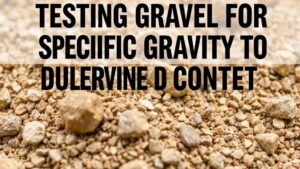The Role of Gravity and Centrifugal Systems in Ore Concentration
The Role of Gravity and Centrifugal Systems in Ore Concentration
Ore concentration is a critical step in the mining and mineral processing industry, directly influencing the efficiency and sustainability of resource extraction. Two fundamental forces at play in this process are gravity and centrifugal forces. This article explores how these forces are harnessed in various ore concentration methods and the implications for operational efficiency and environmental sustainability.
Understanding Gravity-Based Concentration
Gravity concentration exploits the natural force of gravity to separate valuable minerals from gangue, the undesired material. It relies on differences in density between the ore and waste material. This method is particularly effective for heavy minerals, such as gold and tin, that can be easily separated due to their high specific gravity.
Examples of gravity concentration techniques include:
- Panning: An ancient technique where a pan is used to wash away lighter materials, leaving heavier minerals at the bottom.
- Shaking Tables: These devices use a combination of gravity and shaking motion to separate particles based on size and density.
- Spiral Concentrators: Uses a spiral channel to exploit the differential forces acting on particles as they flow through water.
According to the International Journal of Mineral Processing, gravity concentration can achieve recoveries of up to 98% for certain heavy minerals, making it a highly effective approach when applicable.
Centrifugal Concentration Systems
Centrifugal systems, in contrast, rely on centripetal acceleration to enhance the separation of particles based on density. In these systems, centrifugal forces act on the particles in a rotating environment, causing denser materials to move outward while lighter materials remain closer to the center.
Several common centrifugal concentration technologies include:
- Centrifugal Jigs: Employ a jigging process enhanced by centrifugal forces, greatly improving separation outcomes for fine and ultrafine particles.
- Falcon Concentrators: Designed for fine particle separation, these devices generate high g-forces, which help in the efficient recovery of heavy minerals.
- Knelson Concentrators: These are gravity concentrators that utilize centrifugal force for the effective separation of gold and other heavy minerals from lighter materials.
Research published in the Journal of Cleaner Production indicates that centrifugal concentrators can improve recovery rates by as much as 30% compared to traditional gravity methods, particularly for materials in the range of <0.1 mm.
Comparative Insights and Real-World Applications
While both gravity and centrifugal concentration systems serve the same fundamental purpose of mineral separation, they are often employed in complementary roles, depending on the characteristics of the ore being processed. For example:
- Gold Mining: In operations like those at Barrick Gold’s Veladero mine, a combination of gravity and centrifugal methods has successfully improved gold recovery rates significantly.
- Tin Processing: In a study published in the Minerals Engineering journal, a hybrid approach utilizing both systems maximized yield and minimized waste for cassiterite separation.
The integration of technology in these processes has also evolved. Advanced digital controls and data analytics help operators fine-tune the parameters affecting gravity or centrifugal performance, resulting in greater efficiency and lower environmental impact.
Environmental Implications and Future Trends
The impact of ore concentration on the environment is an essential consideration for modern mining operations. Gravity-based methods are generally more environmentally friendly as they use less water and do not require toxic chemicals. In contrast, centrifugal methods, while effective, often require water management systems to handle the increased water usage.
As the industry moves towards sustainability, a growing trend is the implementation of water-efficient designs and the development of dry processing technologies. These innovations aim to reduce the environmental footprint while maintaining high recovery rates.
Conclusion and Actionable Takeaways
Understanding the roles of gravity and centrifugal systems in ore concentration is crucial for effective mineral processing. Both methods offer unique advantages that, when applied strategically, can lead to improved efficiency and sustainability in mining operations. As the industry continues to advance, operators should consider:
- Assessing the specific characteristics of the ore to determine the most effective concentration method.
- Useing new technologies and techniques to enhance recovery rates while reducing environmental impact.
- Staying informed about innovations in the field that may influence future operations and practices.
In summary, by leveraging the principles of gravity and centrifugal forces, mining operations can not only enhance their productivity but also contribute positively to environmental stewardship.



